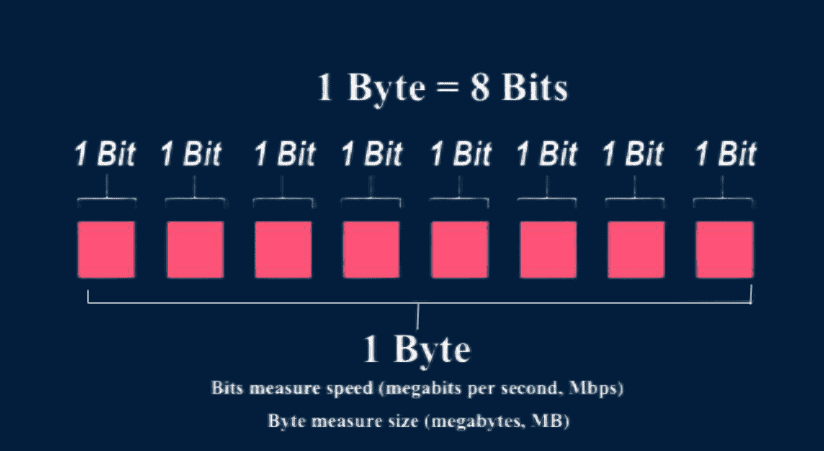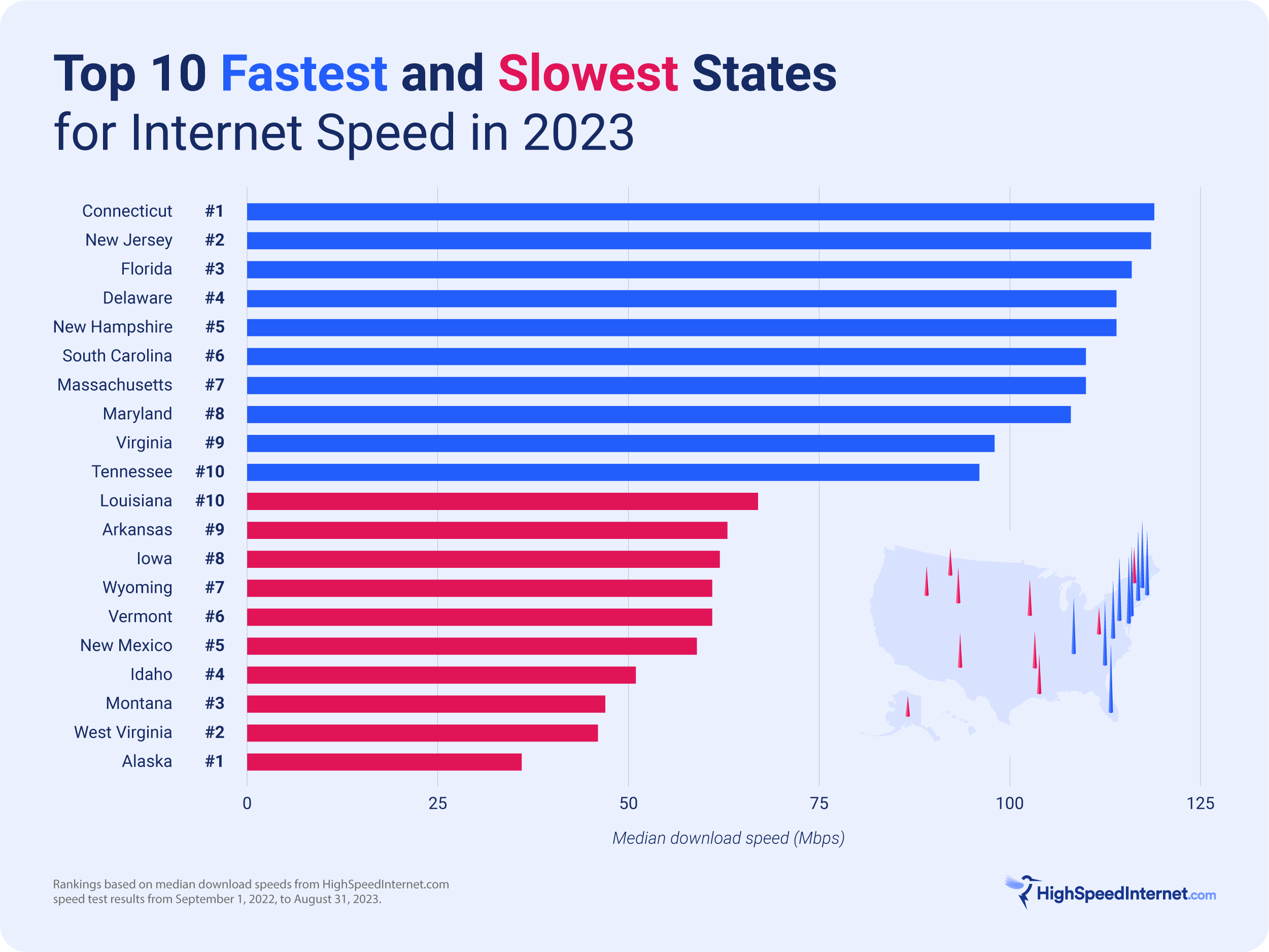Debunking Megabits Per Second: What Consumers Need to Know
Debunking Megabits Per Second: What Consumers Need to Know
Blog Article
How Megabits Per Second Impact Your Online Activities
The concept of megabits per second (Mbps) plays a crucial duty fit our online experiences. As digital activities proliferate, understanding the effects of Mbps on video clip, streaming, and pc gaming conferencing ends up being significantly important. Higher Mbps can boost efficiency and minimize interruptions, while insufficient speeds may foster disappointment and inadequacy. Examining your house's specific demands in connection with these rates is crucial, specifically as several gadgets try bandwidth. The subtleties of exactly how Mbps influences different online activities warrant more expedition, especially as our reliance on digital connectivity proceeds to advance.
Understanding Megabits Per Second
When taking into consideration web speed, it's crucial to comprehend the idea of megabits per second (Mbps), which works as a basic dimension for data transfer rates. This statistics measures how much information can be transmitted over a web link in one second, supplying a clear understanding of efficiency capabilities - Megabits Per Second. For context, one megabit is equal to one million little bits, and Mbps is frequently used to reveal transmission capacity for different online tasks
A greater Mbps indicates a quicker internet link, enabling users to do jobs such as downloading data, surfing websites, and taking part in on the internet pc gaming much more effectively. Regular surfing requires around 1-5 Mbps, while streaming high-definition video may require 5-25 Mbps. Recognizing these requirements is critical for identifying the proper net speed needed for particular tasks.
In addition, the number of gadgets attached to a network can affect general efficiency. Multiple users streaming, video gaming, or downloading concurrently can stress offered transmission capacity, causing slower rates - Megabits Per Second. Reviewing individual online routines and needs is essential in picking an internet plan that aligns with one's needs, ensuring a smooth electronic experience
Streaming and Buffering Issues
Streaming high-def web content has actually ended up being a staple of contemporary online home entertainment, yet it is frequently accompanied by discouraging buffering concerns. These interruptions can substantially diminish the seeing experience, leading to frustration and possible loss of target market engagement. Buffering takes place when the information transmitted from the streaming solution is not gotten swiftly enough to maintain a smooth playback, usually because of insufficient net rate measured in megabits per second (Mbps)

Moreover, real-time streaming can be affected by network blockage, which happens when numerous devices share the same data transfer. Enhancing connection rate and making sure sufficient Mbps is essential for a smooth streaming experience. As streaming solutions continue to advance, recognizing the effect of Mbps on buffering concerns stays important for consumers seeking nonstop amusement.
Online Gaming Performance
The impact of net speed on on-line tasks extends past streaming, substantially influencing on-line gaming efficiency. In competitive pc gaming, low latency and high bandwidth are crucial for a smooth experience. A rapid connection reduces lag, allowing gamers to respond swiftly to in-game events, which can be the difference in between success and loss.
Transmission capacity, gauged in megabits per second (Mbps), plays an important duty in supporting several gadgets and gaming systems at the same time. Inadequate transmission capacity can cause dropped links or decreased video game quality, adversely affecting gameplay. As an example, online multiplayer video games require significant information transfer, especially throughout peak gaming hours when various players are online.
Busy first-person shooters demand greater rates to maintain responsiveness, while turn-based approach games might operate reasonably well on reduced rates. As on-line video read review gaming proceeds to develop, with raising visual fidelity and more complicated multiplayer settings, the need for higher Mbps will only increase.
Video Conferencing Quality
In today's digital landscape, video conferencing quality is heavily influenced by net rate, especially in terms of transmission capacity and latency. Top notch video calls call for sufficient bandwidth to send audio and video data perfectly. Generally, a minimum of 1.5 Mbps upload and download rates is recommended for common meaning video, while high-definition video clip conferencing generally demands at the very least 3 Mbps.
Latency, or the delay in between sending out and receiving data, additionally plays a crucial duty in the individual experience. Reduced latency guarantees that conversations circulation naturally without awkward stops or disturbances. Ideally, latency ought to be listed below 150 milliseconds for reliable communication. Higher latency can cause resemble, lag, and disjointed interactions, which can prevent partnership and engagement throughout conferences.
Moreover, several participants in a video clip conference can stress readily available bandwidth, requiring even higher speeds. Network blockage, often triggered by synchronised tasks like streaming or downloading, can further break down video quality. Hence, for companies counting on video conferencing for remote cooperation, recognizing the relationship in between megabits per second and total interaction top quality is crucial for keeping performance and enhancing virtual communications.
Choosing the Right Web Plan
Choosing a suitable internet plan is vital for ensuring optimum efficiency in different on-line tasks, especially in settings that require high bandwidth, such as video clip conferencing and online gaming. Megabits Per Second. When thinking about a web strategy, it is important to assess both the speed and data allowance to match your details usage demands
For houses with numerous users participating in simultaneous tasks, a strategy using greater megabits per second (Mbps) is advised. Normally, a minimum of 25 Mbps appropriates for standard streaming and browsing, while strategies surpassing 100 Mbps are preferable for even more extensive tasks. Furthermore, consider the nature of your online tasks; video conferencing needs at the very least 1.5 Mbps upload speed, while online video gaming might need a see post reduced latency but constant link.
Unlimited data strategies can prevent strangling and disruptions, particularly if hefty use is expected. By attentively picking an internet plan customized to your demands, you can boost your on the internet experience, making sure smooth, uninterrupted accessibility to your recommended activities.
Verdict
Finally, the importance of megabits per second (Mbps) in forming online activities can not be overstated. Greater Mbps facilitates seamless streaming, reduces buffering, improves gaming experiences, and ensures top notch video clip conferencing. Alternatively, inadequate bandwidth can cause discouraging interruptions and lessened performance across numerous jobs. For that reason, a thorough understanding of private or home Mbps demands is important for picking an ideal net strategy that sufficiently supports varied online tasks and customer needs.

Typically, a minimum of 25 Mbps is appropriate for typical streaming and browsing, informative post while plans surpassing 100 Mbps are more suitable for more intensive jobs. Furthermore, take into consideration the nature of your online tasks; video clip conferencing calls for at the very least 1.5 Mbps submit rate, while on-line pc gaming might need a lower latency yet regular link.
Report this page